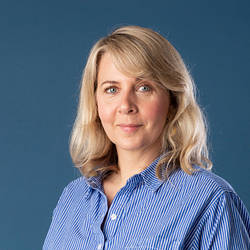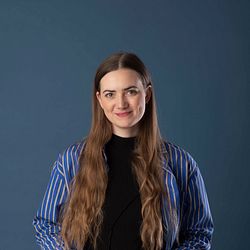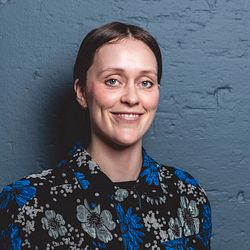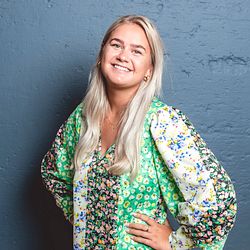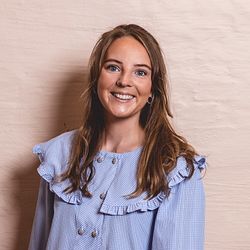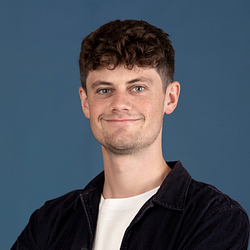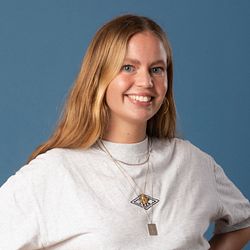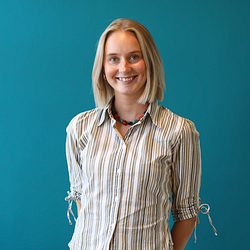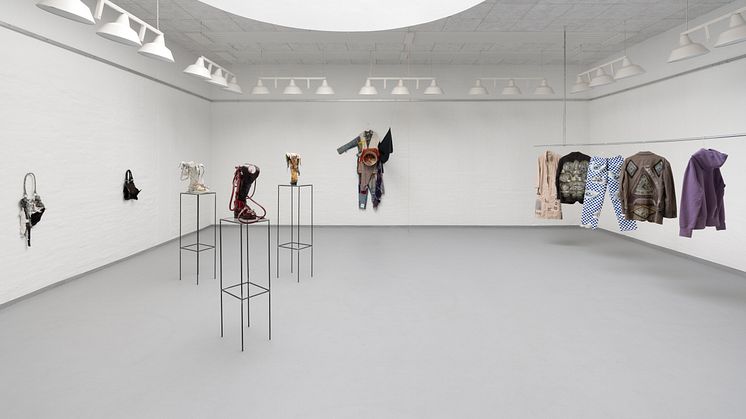
Pressemeddelelse -
SARTOR RESARTUS: International kunstudstilling i Holstebro udforsker tøjets mange betydninger
Individuelle udtryksformer, overforbrug eller intetsigende skrald? En vifte af hæderkronede internationale kunstnere udforsker betydningen af tøj i udstillingen Sartor Resartus på Huset for Kunst & Design i Holstebro. Udstillingen kan ses frem til den 17. oktober, og der er gratis adgang.
Tøj er ikke bare tøj. Enhver beklædningsgenstand repræsenterer nemlig sin helt egen betydning. En betydning, der farves af den, der har båret tøjet, materialerne, det er lavet af, og den kulturelle sammenhæng, som tøjet indgår i.
Dermed indbyder tøj i allerhøjeste grad til kunstnerisk fortolkning og bearbejdning – og det er lige netop, hvad ni forskellige internationale kunstnere har kastet sig ud i.
De resulterende værker er blevet til udstillingen Sartor Resartus, som kan opleves ganske gratis på Huset for Kunst & Design i Holstebro frem til den 17. oktober.
Støvleskulpturer og Dianas graviditetskjoler
Man kan blandt andet opleve mexicanske Pia Camils værk Skin’ Shirt Curtain, der består af brugte t-shirts, som er produceret i Mexico og solgt i USA – inden de vender tilbage til Mexico for at blive solgt som genbrugstøj på et kræmmermarked i Mexico City.
Den hollandske kunstner Tenant of Culture bidrager med hele tre værker til udstillingen i form af serien Autumn Cloth. Der er tale om tre støvleskulpturer, der ligesom Camils værk er en kunstnerisk kommentar til den forbrugscyklus, der medfører, at mange aldrig oplever deres tøjs ’efterår’ – da det altid bliver udskiftet inden da.
To andre kunstnere – amerikanske Issy Wood og argentinske Victoria Colmegna – bearbejder et helt andet tema: Iklædelsen af kvindekroppen. Wood har lidt af spiseforstyrrelser, og hendes værk, Study for good will 3, udforsker, hvordan det at iklæde os bestemt tøj kan indebære, at vi slipper for at forholde os til vores egen krop.
Colmegnas værk består af genskabte udgaver af de graviditetskjoler, som Prinsesse Diana iklædte sig, og herigennem udforsker hun kvinders popkulturelle besættelse af fertilitet og fødsler.
Inspiration fra satirisk roman fra 1836
Som samlet hele skildrer udstillingen tøj på alle tænkelige måder – som individuelle udtryksformer, som overforbrug og som intetsigende skrald. Udstillingen er kurateret af Jeppe Ugelvig, og titlen er lånt fra en satirisk roman fra 1836, skrevet af engelske Thomas Carlyle.
Romanen – hvis latinske titel betyder ”Den lappede lappeskrædder” – skildrer den fiktive tyske filosof Diogenes Teufelsdröckh og hans afhandling Tøj: Dets Oprindelse og Indflydelse. Teufelsdröckhs banebrydende tese færdiggøres aldrig, men Carlyle kan alligevel siges at have opfundet konceptet modesemiotik – læsningen af tøj som betydningstegn.
Anna Margrethe Pedersen er kunstnerisk leder af Huset for Kunst & Design, og hun er stolt over at lægge hus til en så alsidig og vedkommende udstilling:
”Udstillingens kunstnere formår på begavet og nyskabende vis at sætte store temaer i perspektiver, vi ikke normalt ser dem igennem. Kurator Jeppe Ugelvig præsenterer med Sartor Resartus en oplevelse, som igennem tøjet som objekt, kan give besøgende nye erkendelser om bæredygtighed, kropssyn og en række helt grundlæggende identitetsspørgsmål, der berører os alle.”
Holstebro bugner aktuelt med store kulturoplevelser
Kunst- og kulturelskere har et væld af gode grunde til at drage til Holstebro i netop disse dage. Foruden Sartor Resartos kan man for eksempel også opleve en stor udstilling med en af de største nulevende kunstnere, amerikanske Lawrence Weiner på Holstebro Kunstmuseum.
Fra den 26. september til den 3. oktober er der Klassiske Dage, som er byens internationale musikfestival, og i uge 41 kommer hovedstadens dokumentarfilmfestival, CPH:DOX, på besøg i byen.
En samlet oversigt over de aktuelle kulturtilbud kan ses her: https://www.holstebro.dk/kalender
Med venlig hilsen
HAVE Kommunikation & PR
For yderligere information, kontakt venligst:
Sabrina Gade · sabrina@have.dk · 30 65 68 22
Sofie Jensen · sofie.jensen@have.dk · 20 18 68 22
—
Fakta om udstillingen Sartor Resartus
- Kan ses frem til 17. oktober
- Kurateret af Jeppe Ugelvig
- Adresse: Huset for Kunst & Design, Nørrebrogade 1, 7500 Holstebro
- Åbningstider:
- Torsdag og fredag kl. 14.00-18.00
- Lørdag og søndag kl. 12.00-16.00
- Gratis adgang
- Udstillingsprogrammet er generøst støttet af Holstebro Kommune, Færchfonden, Statens Kunstfond, 15. Juni Fonden og Augustinus Fonden.
De 9 kunstnere og deres værker
Nina Beier, Portrait Mode (Triptych), 2011.
Courtesy the artist and Standard, Oslo.
Nina Beier’s Portrait Mode is a monumental triptych that, from a distance, could be mistaken for an abstract painting. However, upon a closer look, the large-scale picture frames are revealed to suspend a pile of clothes printed with leopard and other “exotic” animal patterns, sourced from the internet and second-hand shops. Beier uses artworks as opportunities to comment on trade and commercial systems of exchange of objects, often with particular attention to animals and the way they are made into products either directly (such as fur) or as image (such as pattern). The artwork’s title suggests a portrait of a process that is hard to grasp and even harder to represent – the trendification of animals. Beier presents art as a space to reflect on phenomena such as trend-making, commodity manufacturing, and object obsolescence – what happens when cheap tops are reified as artworks, frozen in time as painterly surface?
Anna-Sophie Berger, Cloak, and A failed play, both 2021
Courtesy the artist and Emanuel Layr, Vienna.
Trained as a fashion designer, Anna-Sophie Berger’s work considers the role of the body within design. Berger often approaches the body as an unlikely and defenseless object that can be imaginatively and symbolically stretched, altered, modified, adorned, replicated, or destroyed through its designed environment. Her new work, Cloak, was developed in response to research into historical sumptuary laws (laws that try to regulate consumption for moral reasons, often in relation to fashion and style) and the so-called Hemline Index, a theory developed in the 1920s by economist George Taylor that posited that skirt length (hemlines) rise or fall along with stock prices and the economy. In this proposed interdependent logic between body, finance, subjectivity, and clothing design, Berger proposes a velvet manteau with hemlines so long that it swallows the wearer whole, effectively obscuring the entire body under a tent-like structure, draped, nonetheless, in a fashionable manner. Rather than clothing objects staging the body, Berger’s Cloak works closer to a kind of storage unit that can contain and protect the body along with one’s possessions. As a sartorial addendum, the smaller work A failed play proposes a speculative semiotic system of subjectivity for a range of fabric swatches, awarding them affective and intellectual traits.
Pia Camil, Skin’ shirt Curtain, 2018.
Courtesy the artist and Sultana, Paris.
Pia Camil’s Skin’ shirt Curtain is composed entirely of second-hand t-shirts in hues resembling human skin, sourced from the enormous open-air market Iztapalapa in Mexico City. . Inspired by the open-air markets of Latin America, the artist comments on a cycle in which shirts designed in the U.S. are manufactured in Latin America, worn and discarded in the United States, and then sent back to Latin America to be sold again in second-hand markets, where their logos advocate for causes far removed from the local culture. As such, Camil uses sculpture to confront viewers with the material politics of globalized consumer capitalism shaped by Western overconsumption, imbalanced trade policies, and exploitative labor markets. Sewing together these lost heterogenous objects into one curtain to illustrate a shared cycle of consumption, Camil suggests that discarded fashion objects may continue to “haunt” their places of origin.
Victoria Colmegna
Replica of Lady Di’s Maternity Dresses, 2018
Courtesy the artist and Paul Soto, Los Angeles
Victoria Colmegna explores the limit between industries: art trends blend with fashion seasons, functional objects become works of art, the rules of each game becoming interchangeable. In this spirit, her collection of replicas of Lady Diana pregnancy dresses exist somewhere between fan item, designer/art commodity, and practical maternity wear, frenetically border hopping between categories. The dresses belong to a collection from a brand invented by the artist called Lalangue – a Lacanian term for the language of desire, one that cannot be spoken. Here the artist puts forward women’s pop-cultural obsession with fertility and birth, especially when prompted by its opposite, death (of mothers and/or babies). She realized that much of this cultural zeitgeist was encapsulated in the late Lady Diana: mortality with fertility, royalty with maternity, pop icon with tabloid scandals, and a certain timelessness. Colmegna embarked on an exhaustive collection of every image of the princess's sartorial pregnancy in a stalker-like fashion. The replicas, made in Peruvian cotton and Egyptian linen and presented here in a mausoleum-type display, show how fabric is itself an embedded code for class. The dresses’ tapestry inserts are a detail invented by the artist, as if the garments would somehow blend with the castle’s furniture. “The dresses also have something very tarot about them,” she explains: “if you have them some time in a space, someone might get pregnant.”
Anna Franceschini
The Stuffed Shirt, 2012
Courtesy the artist, Vistamare/Vistamarestudio, Pescara/Milano and Vera Cortes, Lisbon
Artist and filmmaker Anna Franceschini approaches cinema as a movement machine, an apparatus both industrial and emotional. Her work often portrays sites of industrial production, and her camera lingers with its assembly line and moments of automation until objects begin to take on a life of their own. The title of her video The Stuffed Shirt alludes to an Anglo-Saxon idiom indicating someone very pompous, pretentious, conservative, and reactionary. The expression, as the artist understands it, emphasizes dress in order to denigrate the wearer, who in turn becomes a mere filling material. The video explores the mechanical behavior of the so-called “dressman” machine, an automatic ironing system used by industrial laundries that violently inflates air in shirts to eliminate pleats and wrinkles, and that, in doing so, produces an episodic illusion of life in the garment. This alluring spectacle, repeated endlessly by industrial processes, is deeply grotesque, with the shirt body repeatedly suddenly swelling up and looming over onlookers to become a monster that, escaping human control, seems to potentially cause catastrophe. Trapped between the categories of the uncanny and the eerie, Franceschini approaches the dressman as a strange object of poetic contemplation, and connects it to other non-human creatures such as golems and robots.
Eric N. Mack, Out of Pocket, 2017-2021
Courtesy the artist and Morán Morán Gallery, Los Angeles.
Trained as a painter, Eric Mack’s work engages clothes as both canvas and material to produce solemn, poetic relics of a material world. Integrated into the timeless space of painting, the once-fashionable textiles and garments carefully chosen by Mack offer a wealth of meanings: residues of personal and collective wardrobes, artifacts of fashion-in-time, or even subtle studies of pattern and color. His new work, Out of Pocket, appears as a full outfit hung on the wall, protruding into space via a piece of textile and string. An attached lampshade serves as a kind of void, catching and containing light as the day passes. Mack describes Out of Pocket as an index of gifted garments and textiles transformed over time; configuring this vernacular reliquary into an outfit result in the manufacturing of fictional narratives of wearers and style authors.
Tenant of Culture
Puzzlecut Boot Oxblood, 2021, Puzzlecut Boot Miscellaneous, 2021 and Puzzlecut Booth White, 2021
Courtesy the artist and Soft Opening, London.
Tenant of Culture presents the material excretions of fashion in a fossilized state, suspended between archaeology and commodity. Much like trash, her works—often assembled using discarded and recycled denim, jackets, socks and accessories sourced from charity shops or eBay—tell stories inchoately; there is the outline of a plot, but only in the form of a puzzle, fragments of an impossible history. Her series Autumn Cloth consists of single boot sculptures on a glass and steel pedestal, distinct for their blown-out, aggregate shapes, have been produced following traditional shoe-making techniques, only using an erratic patchwork made up entirely of recycled shoes and handbags as its material. By exposing the details of this process, Tenant of Culture visualises common manufacturing processes in the industry while materially evoking their mutated nature: hybrid zombie-objects haunted by former product lives. Autumn Cloth takes its name from the English economist Nicholas Barbon, an early theorist of fashion consumption, who in a 1690 essay praised fashion’s ability to “dress a man as if he lived in a perpetual spring – he never sees the autumn of his cloth.” In this evocative metaphor, “autumn cloth” – threadbare cloth that needs replacing – is never reached thanks to the cycle of fashion that replaces clothes long before it is actually necessary. Since the time of Barbon’s writing, this mode of fashion production has only accelerated, particularly with the rise of the global fast fashion industry, where cheap price points and dozens of product drops a year render garments ever more expendable, accelerating their obsolescence. The artist proposes art as a strange archive of this permanent disaster, where materials and objects may go to take on new meanings and values in a fossilized state.
Issy Wood
Study for good will 3, 2021
Courtesy the artist and Carlos Ishikawa, London.
The paintings of Issy Wood depict ephemera such as fashion, car interiors, and antiques from auction catalogs, conveying a seeming obsessive relationship with commodity culture. Rendered in an impressionist style, Wood makes strange our desire or fascination with objects, teasing out their innately alienating or anxiety-inducing effects. While fashion remains a popular motif in the artist’s work, Wood has for several years also painted directly onto discarded clothing objects, transforming them into strange relics that force viewers to relate to them with their own body. “Clothes are important: They are the very definition of frivolity but also the most fundamental,” writes the artist in an essay accompanying this exhibition, in which she pin-points how clothes tend to become proxies for dealing with our bodies, and vice versa. As a kind of revenge on the power of clothes – our incessant desire to own them, to fit into them, at times with devastating effects – Wood’s objectification of them as artworks functions as a relief, a conclusive distancing from the body. “When I realised I could paint on the clothes I can’t or won’t wear, suddenly those compulsive insomniac purchases and years of physicians watching my weight, it all mattered less,” she reflects. “Often when wearing clothes wears you out, the best clothes are ones you don’t have to wear at all.”
Bruno Zhu
Men, 2017-18
Courtesy the artist
Bruno Zhu’s background in fashion design has led to a conceptual interest in style and consumerism, which manifests in his work through both objects and situations. His series Men is comprised of a series of opera gloves made of trousers, hanging on the wall as worn garments or body shells. While the design follows that of female leather gloves (highlighted in their particular construction) emphasising elegance and glamour, the trousers are originally tailored and made for men, typically an office requirement in male-dominated, white collar office environments. Zhu’s altercation brings out the way that gender norms and class aspirations manifest and are upheld through garments, efficient as they are in conjuring complex social and political meanings that we, in turn, identify with and desire intensely. As mutant commodities, Men are both irreverent and confusing, haunted by former meanings while inviting for new interpretation and signification.



